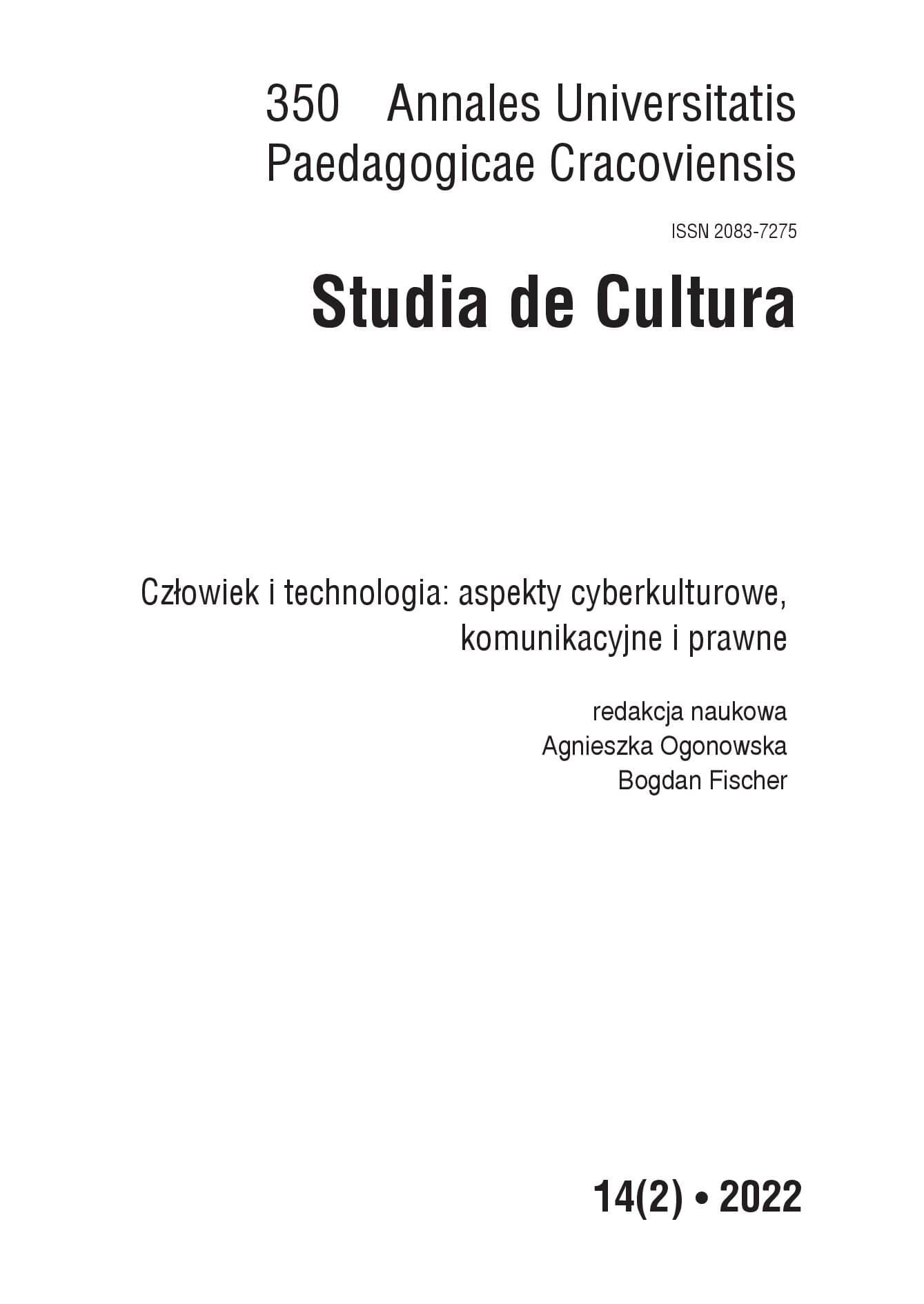Abstract
The TikTok web application is globally popular. Forms of tiktokers dance created and exhibited in cyberspace consist of various compilations and enable temporal and non-spatial communication between users around the world. Dance in the sub-world of tiktoker networks has an intercultural dimension. The purpose of activities in the TikTok application is to obtain social confirmation, image creation or purchase of a specific product. Continuing, re-creating the exhibition in the application is a sign of succumbing to persuasion by subsequent participants, including those implementing a specific trend or viral. The analysis carried out at the semantic, syntactic and pragmatic level confirms the thesis that the form of tiktokers’ dance created and displayed using the TT application in social media is fragmentary and its online examples are used for persuasive purposes (marketing, political, created selfpresentation) and serve to fulfill a specific purpose, implement views, information, serve the transmission of content. The subsequent parts of the work are based on the division of semiotics introduced by Charles W. Morris (Morris 1938).
References
Akademicznyj tłumacznyj słownyk ukrajinś koji mowy. http://sum.in.ua/s/estetychnyj. (dostęp: 3.09.2020).
View in Google Scholar
Banes Sally. 2003. Terpsychora w tenisówkach. Taniec post-modern. Artur Grabowski, Jadwiga Majewska (przeł.). Kraków.
View in Google Scholar
Cardoso Gustavo. 2006. The Media in the Network Society. Browsing, News, Filters and Citizenship. Lizboa.
View in Google Scholar
Castells Manuel. 2007. „Communication, Power and Counter-Power in the Network
View in Google Scholar
Society”. International Journal of Communication nr 1. 238–266.
View in Google Scholar
Ekman Paul, Friesen William. 1978. V. Facial Action Coding System. New York.
View in Google Scholar
Eliade Mircea. 2001. Szamanizm i archaiczne techniki ekstazy. Krzysztof Kocjan (przeł.). Warszawa.
View in Google Scholar
Gennep Arnold van. 2006. Obrzędy przejścia. Systematyczne studium ceremonii. Beata Biały (przeł.). Warszawa.
View in Google Scholar
Giddens Anthony. 2004. Socjologia. Alina Szlużycka (przeł.). Warszawa.
View in Google Scholar
Golka Marian. 2007. Socjologia kultury. Warszawa.
View in Google Scholar
Jachimowski Marek. 2012. „Wpływ konwergencji mediów na kształtowanie się przestrzeni medialnej”. Rocznik Prasoznawczy t. 6. 37–57.
View in Google Scholar
Kampka Agnieszka. 2014. Retoryka wizualna a świat społeczny. W: Retoryka wizualna. Obraz jako narzędzie perswazji. Agnieszka Kampka (red.). Warszawa. 5–16.
View in Google Scholar
Krajewski Marek. 2005. Kultury kultury popularnej. Poznań.
View in Google Scholar
Leszczak Oleg. 2008. Lingwosemiotyczna teoria doświadczenia t. 1. Kielce.
View in Google Scholar
Majewska Jadwiga (red.). 2013. Świadomość ruchu. Teksty o tańcu współczesnym. Kraków.
View in Google Scholar
Mazurczyk-Jankowska Ewa. 2020. TikTok – czy to nadal platforma dla dzieciaków, czy może ciekawe narzędzie employer branding? – część 1. https://grubyhr.pl/2020/11/12/tiktok-czy-to-nadal-platforma-dla-dzieciakow-czy-moze-ciekawe-narzedzie-employer-branding-cz1/. (dostęp: 18.02.2021).
View in Google Scholar
Muggleton David. 2004. Wewnątrz subkultury. Ponowoczesne znaczenie stylu. Agata Sadza (przeł.). Kraków.
View in Google Scholar
Prejs Bogdan. 2010. Subkultury młodzieżowe. Bunt nie przemija. Katowice.
View in Google Scholar
Shusterman Richard. 2007. O sztuce i życiu. Od poetyki hip-hopu do filozofii somatycznej. Wojciech Małecki (przeł.). Wrocław.
View in Google Scholar
Shusterman Richard. 2016. Świadomość ciała. Dociekania z zakresu somaestetyki. Wojciech Małecki, Sebastian Stankiewicz (przeł.). Kraków.
View in Google Scholar
Słowar’ russkogo jazyka Ożegowa. https://slovar.cc/rus/ojegov/621328.html. (dostęp: 3.09.2020).
View in Google Scholar
Słownik języka polskiego PWN. https://sjp.pwn.pl/slowniki/estetyczny.html. (dostęp: 3.09.2020).
View in Google Scholar
Szlendak Tomasz, Olechnicki Krzysztof. 2017. Nowe praktyki kulturowe Polaków. Megaceremoniały i subświaty. Warszawa.
View in Google Scholar
Usenko Konstanty. 2012. Oczami radzieckiej zabawki. Antologia radzieckiego i rosyjskiego undergroundu. Wołowiec.
View in Google Scholar
http://www.abc.net.ua. (dostęp: 3.09.2020).
View in Google Scholar
https://www.wirtualnemedia.pl/. (dostęp: 3.09.2020).
View in Google Scholar
https://www.youtube.com/intl/pl/about/press/. (dostęp: 3.09.2020).
View in Google Scholar

This work is licensed under a Creative Commons Attribution-NonCommercial 4.0 International License.

